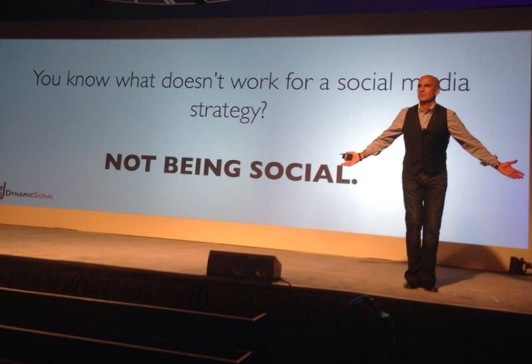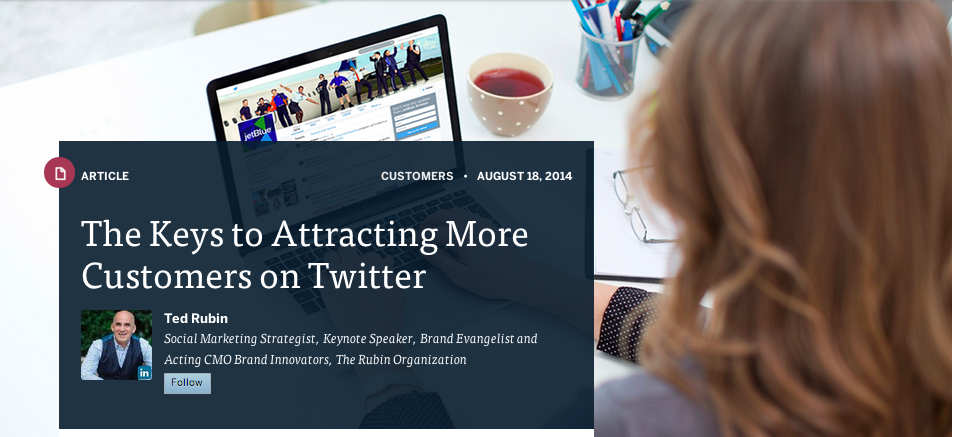You know what doesn’t work for a social media strategy? Not being social. It might sound like common sense, but all too often, being social is overlooked in a social media strategy. It’s not enough to just start accounts with all the most popular social media tools and community sites, even when you include professionally-designed graphics and a big bold display of your logo and a few text lines about your brilliant mission. First and foremost, you absolutely must BE SOCIAL!
strategy
How to Increase Blog Traffic…
For me it is not about tools, but about strategy, and execution. Here are a few things to consider in addition to just posting articles and working the SEO angle…
1. User-Friendly Navigation: Keeping your blog easy to navigate with intuitive category labels will help people find the information they seek much faster. Also, make it easy for readers to leave comments and share your posts on various channels that will help lead others back to you.
2. Look for Holes in Your Competition: Take a look at your competition’s blogs and websites. Are there content holes they’ve missed that you can take advantage of? Ways to add value not already available and help you stand out. Those consistently provide lots of content have a bigger chance of attracting people who are actively looking for information.
3. Don’t Close Your Comments: Don’t close the door for people to leave comments on your blog; doing so leaves the impression that you only care about what you have to say and are not willing to be responsive to others. Seth Godin can do it, and it sure works for him, but until you are playing in that league, don’t go there.
4. Commenting on Other Blogs: Look for other blogs in your industry that have a good amount of traffic and comments, and contribute a comment, but only if you think you can add value to the conversation. Be careful not to promote your blog here; just add some insight, and do it on a regular basis. Make seeking out and commenting on other blogs a part of your daily activities. The more you contribute to the conversation happening around you, the more you’ll be seen as a thought-leader (and people will click on your link to check you out).
5. Syndicate, syndicate, syndicate… share your content via all social channels always including Twitter, Facebook, Google+ and LinkedIn, which also makes it easy for others to share. And don’t be afraid to do it more than once periodically sharing old posts via your social channels, especially those that were well received. Also let others freely repost your content with a link back to the original post.
Welcome to the ‘Age of Influence,’ where anyone can build an audience and effect change, advocate brands, build relationships and make a difference.
The Keys to Attracting More Customers on Twitter ~ via @OPENForum
“Seeking a real return on your social media relationships? Prove your business is customer obsessed by employing the Twitter strategies of companies that “get it.”
It’s one thing to say you’re customer obsessed on social media and quite another to show you mean it. Modern consumers are social media savvy, and they can spot the difference, so if you want a real “return on your relationships” (#RonR), you’ve got to be truly customer obsessed on all your social media platformsTo highlight that point, let’s take a closer look at two large companies, JetBlue and Duane Reade, that do an excellent job of putting the customer-obsessed concept into action on social channels. While you may not have their resources, you can certainly pick up a few tips so your small business truly connects with customers.
JetBlue Airways
Being customer obsessed requires paying attention to the little details, and it’s clear that JetBlue “gets it” from the moment you visit the airlines’ Twitter page. You can see the company is focused on customers even before you read a single tweet, thanks to its effective use of Twitter’s profile page functions.Let’s take a look at the details:
– JetBlue’s Twitter page has close to 2 million followers, which is strong but not out of line when compared to other major airlines. The “following” count is what really stands out, though, clocking in at more than 100,000. Check out the follower/following ratios of other popular accounts, and you’ll quickly see that JetBlue is way out in front on the number of other Twitter accounts it follows.
– Take a look at the company’s profile blurb. “Hi, nice to tweet you!” is pleasant and warm, a stark contrast to the all too common “The Official Twitter Page of …” opening. After that, you get a quick, relevant description of the company, followed by multiple contact options. It’s all framed under a welcoming cover photo that’s light on logos but heavy on diversity and smiles.
– JetBlue does a nice job tweeting a mix of customer-focused contests, clever hashtags and charity drives, but its replies to customers are what really stand out. There are no form messages or any other signs of automation. When a customer tweets @JetBlue, they know they can expect a personalized response, coming from a real human being. JetBlue also does a great job of sharing fun travel photos from its followers.
Duane Reade
There’s more than one right way to be customer obsessed on Twitter, and drugstore chain Duane Reade gets there in a slightly different fashion than JetBlue. Both of these companies’ profile pages are well done, and both companies follow more accounts than average.The difference comes in the content of the tweets, and the information each company chooses to share. See what I mean:
– Duane Reade is based in New York City, and the city is a constant theme in their tweets. It’s a great way of saying “We live here, and we care about this place, too!” Duane Reade’s Twitter feed is also full of tweets about area events but not in a self-serving way. Most of the events the company tweets about have little or no apparent connection to the company.
– You’ll also find plenty of photo and video content shared on Duane Reade’s Twitter stream. Cityscapes bump up against silly pet pictures and odes to things like National Hammock Day in a way that makes the account feel more personal than corporate, which is tough to pull off.
– Like JetBlue, Duane Reade does a great job of replying to customers in a personal, timely way and sharing customer tweets. The company also embraces the language and intent of social media, dropping in the occasional bit of Internet slang or emoticon, and linking its various social feeds together.
In the end, customers want to be treated like human beings, not data points, and both JetBlue and Duane Reade embrace that with every detail. It all starts, though, with simple things. Reply to people promptly, with personalized messages, and share relevant, interesting content.The effort you put into being customer obsessed will be more than reciprocated by the return on relationship you build as a result.
Photo: iStockphoto
Originally posted AUGUST 18, 2014 American Express Open Forum blog
What is BulletProof Branding? My Forward for @westfallonline’s New Book
POSTED BY CHRIS WESTFALL ON APR 25, 2014
Introducing BulletProof Branding
Does Big Data Kill Big Thinking?
 Big Data is a popular term today that references the huge volumes of business and consumer data being collected and stored by organizations, which cannot be effectively data mined due to the limitations of commonly used software tools that capture, manage, or process the data.
Big Data is a popular term today that references the huge volumes of business and consumer data being collected and stored by organizations, which cannot be effectively data mined due to the limitations of commonly used software tools that capture, manage, or process the data.
While first diagnosed in the science, government, healthcare and military industries, the vast volumes of consumer data being produced through social technologies has landed this reality – and this problem – on the desks of CMOs globally.
Not only is data being produced at lighting speeds, the devices used to produce, broadcast, measure, store and share that data are on the rise, which then fuels further content generation. The cycle is creating a Big Data cyclone that organizations will continue to struggle with.
There’s Hearing, Then There’s Listening
 We were all probably taught the difference between listening and hearing when we were children. “I hear you,” you say. No doubt you’ve uttered that or had it uttered to you. But is it enough?
We were all probably taught the difference between listening and hearing when we were children. “I hear you,” you say. No doubt you’ve uttered that or had it uttered to you. But is it enough?
We all have a fundamental need to be heard; that implies that we’re acknowledged, certainly. Technically, hearing is simply the process of sound being transmitted and received. Telling someone that you’ve heard them is a good first step, and while that’s an easy way to make a customer feel appreciated by a major brand, there are times when it needs to go beyond hearing and to truly listen: to take to heart what they’ve said and take a harder look at a business practice or service.
Do you have a strategy or are you simply “doing” social media?
 I had lunch with some friends last week who shared with me that they often get asked to just “do some social media” for their clients.
I had lunch with some friends last week who shared with me that they often get asked to just “do some social media” for their clients.
Oh, if it were only that simple.
I think a lot of businesses think this way. They believe that simply throwing some social media icons on their website is enough or that they need to have profiles on every single social media site because “everyone else does”.
How Social Media is Changing Public Relations
 In 2010, facing the biggest public relations crisis in recent history, oil company BP turned to the one medium that could instantly address public concern: social media. Nearly six months after the Gulf of Mexico oil spill occurred, BP has nearly 48,000 Facebook fans, over 19,000 Twitter followers and more than three million YouTube channel views.
In 2010, facing the biggest public relations crisis in recent history, oil company BP turned to the one medium that could instantly address public concern: social media. Nearly six months after the Gulf of Mexico oil spill occurred, BP has nearly 48,000 Facebook fans, over 19,000 Twitter followers and more than three million YouTube channel views.
Social media updates describe cleanup efforts, research projects targeting impacts of the oil spill and calls for volunteers.
While the success of BP’s social media efforts is debatable, few people can argue the need to monitor and address online comments and feedback. As BP has shown, the biggest change may be the new challenges in reputation management. With these challenges also come new opportunities – opportunities to mitigate bad press, connect with customers and reach potential influencers in the media.
New Threats, New Opportunities
Reputation management isn’t just necessary for big corporations. Small businesses also benefit from monitoring social media chatter, whether or not they have social media profiles. Simple searches on Facebook and Twitter reveal valuable information about customer satisfaction, competitor weaknesses and new market opportunities.
How to Climb the Hierarchy of Success
 I think it looks like this:
I think it looks like this:
- Attitude
- Approach
- Goals
- Strategy
- Tactics
- Execution
We spend all our time on execution. Use this word instead of that one. This web host. That color. This material or that frequency of mailing.
Big news: No one ever succeeded because of execution tactics learned from a Dummies book.
Tactics tell you what to execute. They’re important, but dwarfed by strategy. Strategy determines which tactics might work.
But what’s the point of a strategy if your goals aren’t clear, or contradict?
Three Views On The Future Of The CMO

The world of marketing is undergoing a massive evolution, consider these three ideas shaping the future of the CMO.
1. Technology Transcendence
For kids today, technology is omnipresent. It’s just there, in everything they do. They are born digital natives. Technology is just a part of life (kinda like sliced bread is for us).
If you hold the highest marketing position in your company, it’s time you become a digital native too. Replace any fear of technology with the acceptance of it. It is no longer a separate “thing” to think about. It must be a part of your subconscious. You need to look through the technology lens and find all the ways it can help you.
2. The Collaborative Strategist
Did we really need the marketing automation software industry to be born to realize how important it is for marketing to be in lock step alignment with sales? One wouldn’t think so, yet it seems that it is the catalyst sparking more and more alignment conversations.
The CMO’s role is to open the door to collaboration and work together with your sales counterpart to determine the next best moves to optimize revenue growth.
3. An Open Point Of View
Working to control your marketing messages today is futile. It is no longer a battle that can be won. It’s time for the brand police to retire.
Changes to the way marketing messages are perceived and consumed have forced the need for a deeper understanding of consumption habits and an open approach to interacting and communicating with your customers. Consider the ease at which your message can be hijacked by consumers (think: BP Oilspill or Nestle), and you quickly realize why CMOs must relinquish control and be open.
How are you changing your view?
Jeremy Victor



